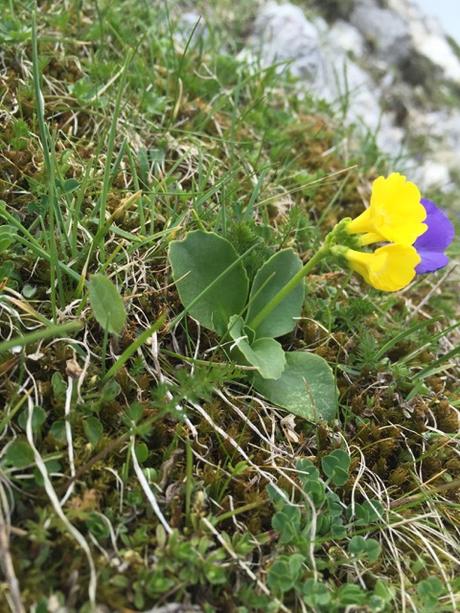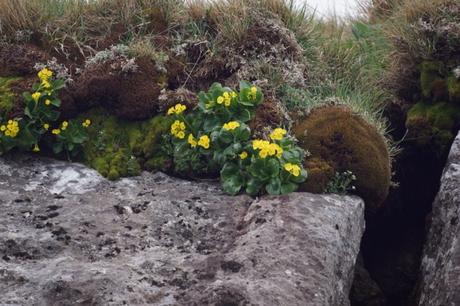I am never happier than when I’m amongst flowers growing in their natural habitat – especially when it involves mountains – so for the last week I was very happy indeed.
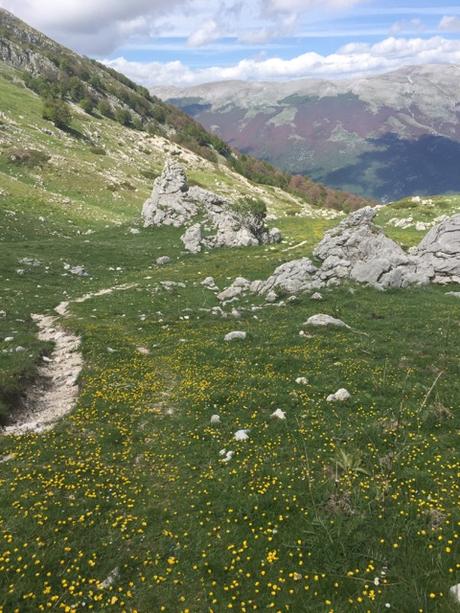
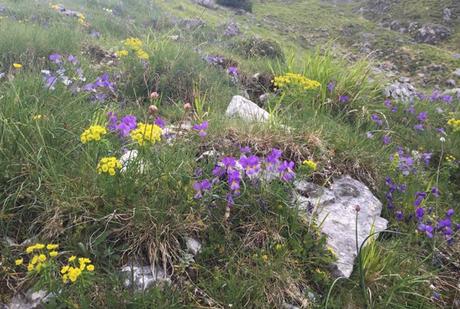 The Abruzzo National Park is in the Apennine Mountains about three hours east of Rome and straddles the range that could be thought of the spine of Italy. We were based in the village of Pescasseroli – a ski resort in winter – and at this time of year, a perfect base for early morning walks exploring the surrounding meadows, for day trips higher into the mountains, as well as dawn and evening outings to watch for the endemic Marcasan bears, deer, chamois, wolves and wild boar.
The Abruzzo National Park is in the Apennine Mountains about three hours east of Rome and straddles the range that could be thought of the spine of Italy. We were based in the village of Pescasseroli – a ski resort in winter – and at this time of year, a perfect base for early morning walks exploring the surrounding meadows, for day trips higher into the mountains, as well as dawn and evening outings to watch for the endemic Marcasan bears, deer, chamois, wolves and wild boar.
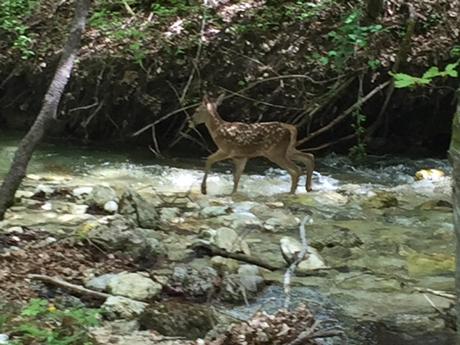 It was a mixed interest trip that included birds, beasts, butterflies and botanising. I prefer this to pure botanising because it is less intense and you don’t spend the entire week on your hands and knees examining plants through a magnifying glass. I like to enjoy the rush of water, to look up and see the birds (including the golden eagles soaring above the peaks), to watch Swallowtail and Adonis Blue butterflies flitting amongst the wildflowers and join in the excitement of seeing thirteen wild boar sows and their forty-one stripy, spotty piglets foraging in a meadow.
It was a mixed interest trip that included birds, beasts, butterflies and botanising. I prefer this to pure botanising because it is less intense and you don’t spend the entire week on your hands and knees examining plants through a magnifying glass. I like to enjoy the rush of water, to look up and see the birds (including the golden eagles soaring above the peaks), to watch Swallowtail and Adonis Blue butterflies flitting amongst the wildflowers and join in the excitement of seeing thirteen wild boar sows and their forty-one stripy, spotty piglets foraging in a meadow.
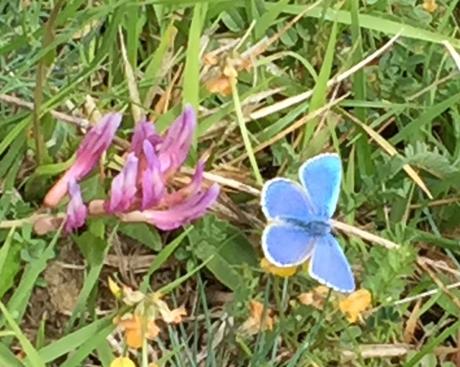
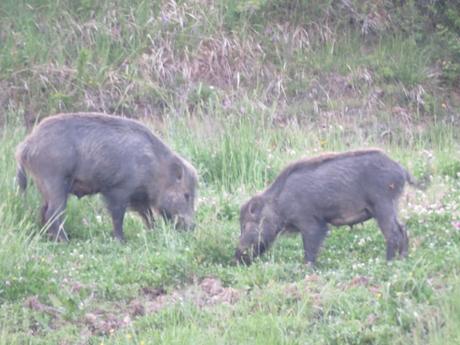 Mountain weather can be very changeable, but we were incredibly lucky and the sun shone most of the time – we only lost an hour of exploring during a single heavy downpour. However the deciduous (mainly beech) woods had been dramatically damaged by hard late frosts that had browned the young emerging foliage – it was as if spring and autumn had collided – a most peculiar effect.
Mountain weather can be very changeable, but we were incredibly lucky and the sun shone most of the time – we only lost an hour of exploring during a single heavy downpour. However the deciduous (mainly beech) woods had been dramatically damaged by hard late frosts that had browned the young emerging foliage – it was as if spring and autumn had collided – a most peculiar effect.
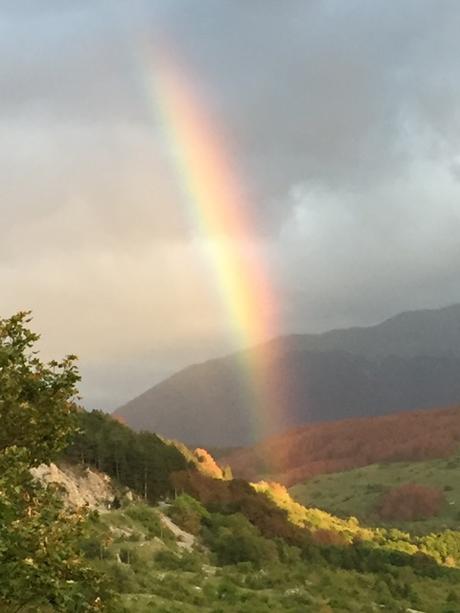
Now I know where Tiepolo got the inspiration for his skies
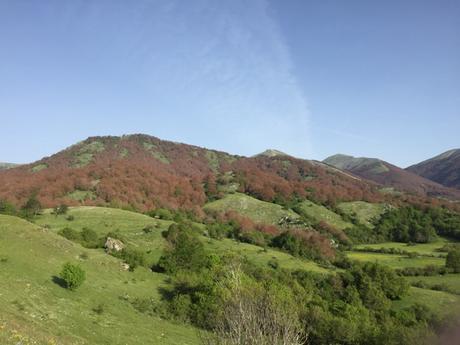
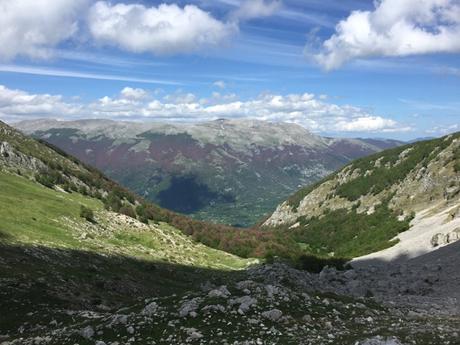
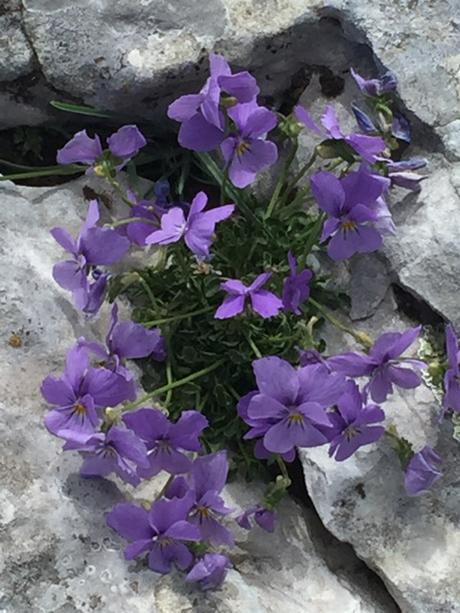
Mountain Pansy – blue at altitude, yellow lower down
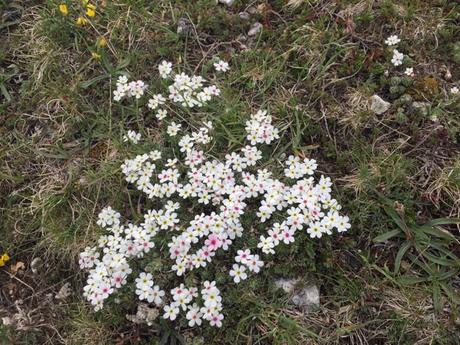
Androsace
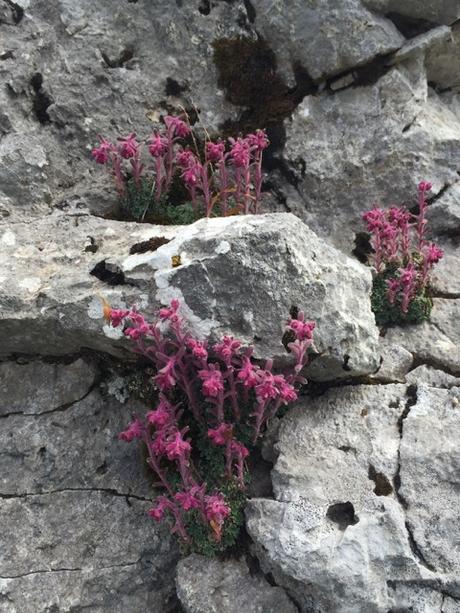
Saxifrage
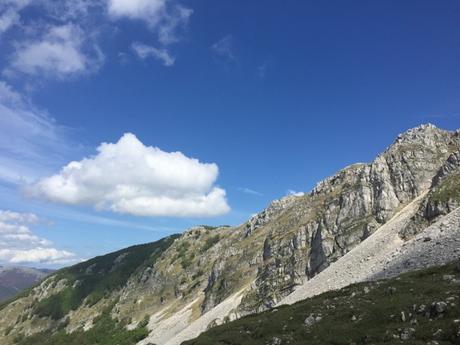
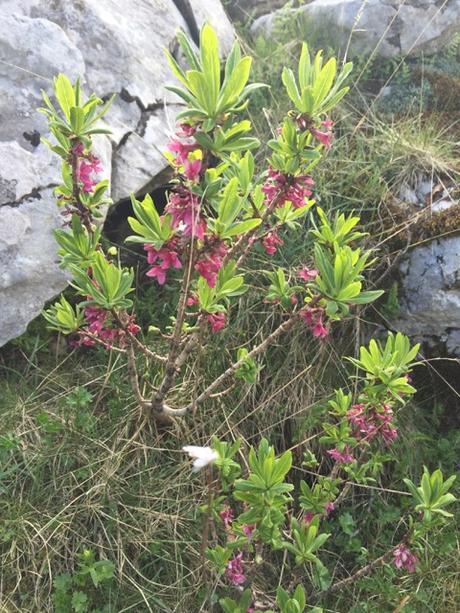
Daphne mezereum
I can’t remember visiting anywhere in Europe with such a diversity and density of wild orchids. We counted twenty six varieties in all, from a rare and precious lady’s slipper orchid on the banks of a river, to the strange and not very attractive brown bird’s nest orchids beneath the beech trees and elderflower orchids and burnt orchids in such profusion that it was hard to know where to put your feet.
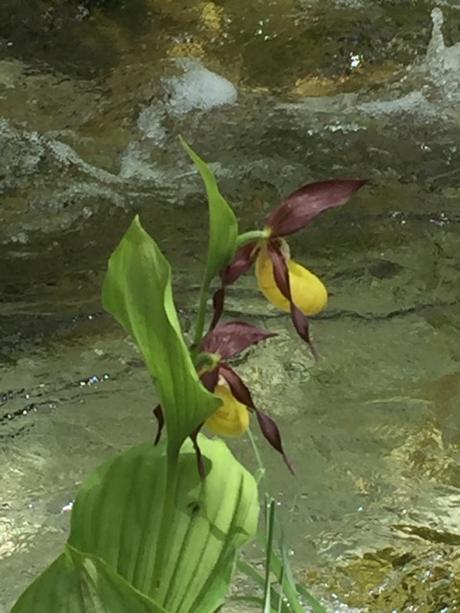
Lady’s Slipper Orchid
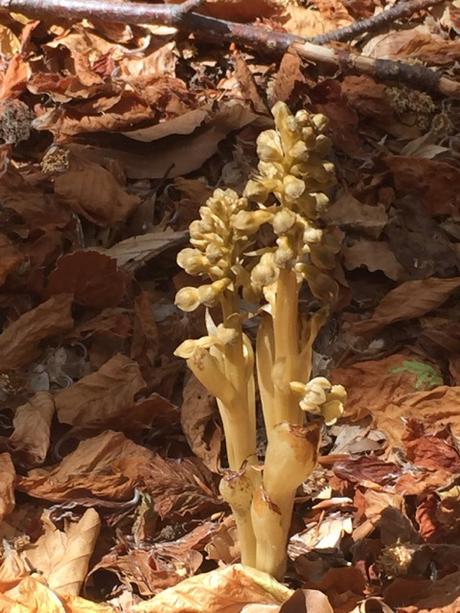
Bird’s Nest Orchid
And here’s two colour variations of Elderflower orchid :
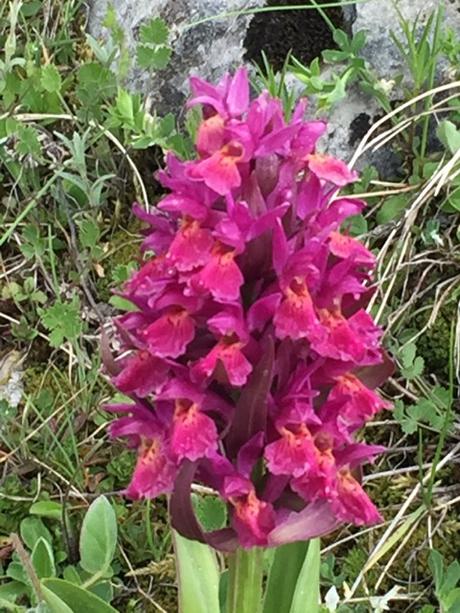


Helleborine

Burnt Orchid
I particularly enjoyed taking a close look at plants that I grow in my own garden and getting a better understanding of the conditions in which they thrive. For instance Star of Bethlehem grows prolifically in meadows, while Thalictrum (meadow rue) likes damp conditions, Daphne mezereum grows surprisingly high up, tucked in amongst rocks and Euphorbia myrsinites (there were many different euphorbias) prefers the free-draining rocky slopes. I was also reminded that auriculas naturally grow at high altitude beneath rocky outcrops, protected by snow all winter and coming into flower once the snow melts and trickles down to their roots. I’m not quite sure how I can emulate that in my snowless coastal garden. This may explain why most of my auriculas seldom live beyond a couple of years despite being cossetted in a north facing corner, kept dryish in winter and generally being symbolic of the triumph of hope over experience. But such is the nature of gardening. More posts to come about the plants, but I need to get outside and put some lessons into practice.
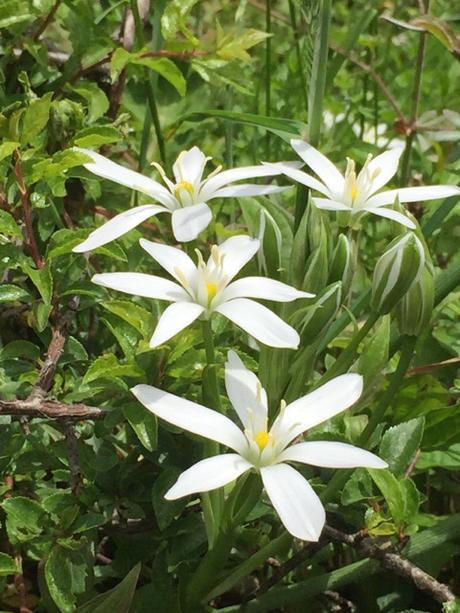
Star of Bethlehem
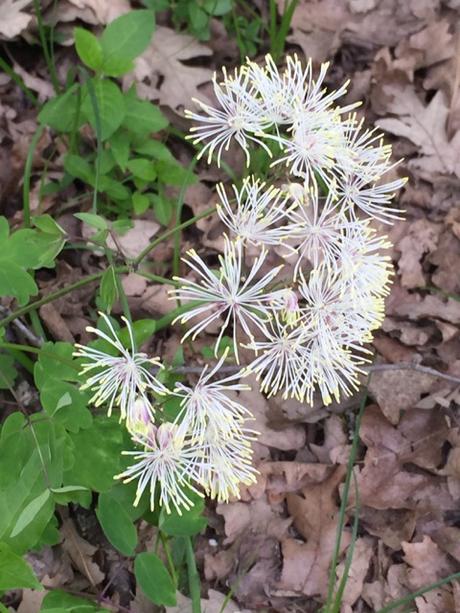
Thalictrum

Euphorbia myrsinites
